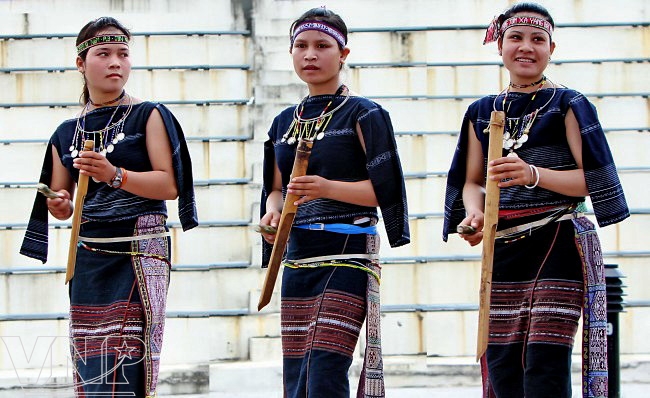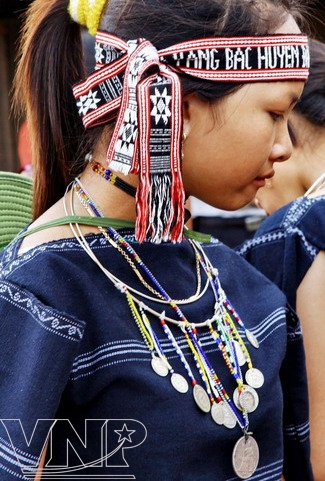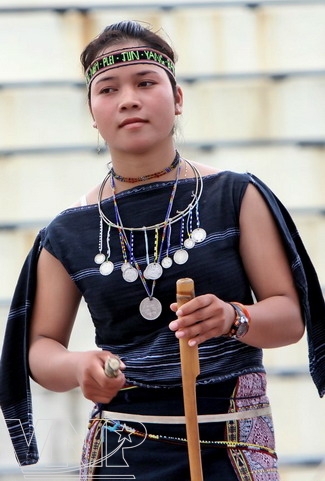A traditional costume is one of the important factors that create cultural characteristics of the Bahnar Ethnic people in Gia Lai of Truong Son Mountain Range. Through their costumes, one can see typical cultural features and religious beliefs of this ethnic group.
For many years, the Bahnar people have lived in harmony with nature and depend on it. For this reason, their costumes partly reflect natural factors. The Bahnar people grow cotton plants and use the fibres to spin into thread that is then dyed and woven into costumes. Today, they can buy thread at the market and dye them in the traditional method to create natural colours before weaving.
Seen from outside, the traditional costume of Bahnar girls is simpler than that of other ethnic groups in Tay Nguyen (the Central Highlands). It actually requires the weavers’ skills and cautiousness that is reflected through colours and patterns at the shoulder, breast and fringe of the shirt. The front flap of the shirt, two sleeves and skirt are embroidered with geometric-shaped patterns and natural designs and the belt is decorated with motifs and cloth fringes. The Bahnar women also wear colourful glass-bead necklaces and bronze and silver rings.
One of the most typical features of the Bahnar costume is that the sleeves of the shirt are designed not for use but for highlighting the gracefulness and lissomness of wearers. Their skirt is shorter than that of the E De or other ethnic groups that aims at showing the wearers’ beauty.

Bahnar girls in their traditional costume. |

The Bahnar girls like to use
a cloth ribbon to tie around their head. |

The traditional costume highlights
the beauty of the Bahnar girl. |
Story: Thuc Hien - Photos: Trinh Van Bo
Story: Thuc Hien - Photos: Trinh Van Bo